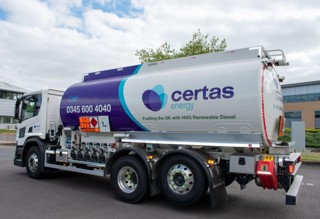We investigate the van and truck body options for fleets who want to make big fuel savings
It may sound like heresy to some, but with diesel at around £1 a litre at the pumps compared with around £1.50 five years ago, some bodybuilders believe that cutting weight is more important to van and truck fleets than fuel-saving aerodynamic treatments.
Reducing weight means vehicles can carry more, they point out, and are more productive – an important consideration so far as trucks in particular are concerned, given the shortage of LGV drivers. Lightening vans and trucks brings fuel economy benefits too, they add, burning less fuel and emitting less CO2.
“Run 100kg lighter, and ultimately you’re talking about fewer vehicle movements,” observes Iveco product director, Martin Flach.
Bevan Group managing director Anthony Bevan hears similar views from his clients.
“Aerodynamics are not top of the agenda so far as our customers are concerned, now that fuel prices are down,” he says. “In fact most of them aren’t really interested at all. Weight has become more of a concern to them than shape and, if you make a vehicle as light as possible, you will save fuel anyway – although you have to be careful not to sacrifice strength.”
Back in 2011, Bevan Group launched its dramatically-sculpted Icon Luton body at the Commercial Vehicle Show.
Designed for 3.5-tonne platforms by the west midlands-based bodybuilder, in conjunction with aerodynamics experts from Cranfield University and Hatcher Components, the Icon delivered fuel economy savings of up to 15%. The design was created using three-dimensional computational fluid dynamics and was honed using wind tunnel testing. The body was adopted by a number of operators, including removals specialist House to Home.
Five years later, with oil prices plummeting, it is a very different story. “We are hardly selling any Icons at present,” admits Bevan.
Keeping the unladen weight down is certainly likely to be more important at 3.5 tonnes than adding aerodynamic kit, says Ingimex managing director, Justin Gallen.
“Remember that 3.5-tonners often struggle to achieve a decent payload and many of them cannot carry much more than a tonne,” he says.
It is interesting to note, however, that the 10 Mercedes-Benz Sprinter 313CDI-based Icons deployed by House to Home offered a reasonably-respectable payload of more than 1,200kg, thanks in part to the use of lightweight body panels made out of a composite glass reinforced plastic.
Light commercials, such as 3.5-tonners, tend to be used on urban and suburban delivery work, dropping off goods ordered over the internet.
Because speeds are so low, aerodynamic features such as cab-roof aerofoils and radiused corners on the body have less of an impact on fuel usage if a vehicle is on that sort of duty cycle than they do if it is travelling at a steady speed down the motorway.
Cartwright unveiled a home delivery concept vehicle at last year’s Commercial Vehicle Show, featuring an eye-catching aerodynamic body style. But the company was perhaps going against the grain.
“An air kit is fine if you’re going up and down the M6, but not so beneficial if you’re on distribution work in London,” says DAF marketing manager Phil Moon.
Employing aerodynamics and cutting the kilos need not be policies that are mutually exclusive, however. Paying attention to aerodynamics does not necessarily involve dramatic change, according to Flach.
“Reducing the height of the body to the height of the cab and using a collar to smooth the gap between the cab and the body can bring benefits,” he says.
Moving up the weight scale, putting a 7.5-tonner that spends almost all its life in built-up areas on a diet is likely to be more beneficial than minimising its wind resistance, suggests Richard Owens, marketing manager at Don-Bur.
“At that sort of weight a 500kg saving will have a far greater effect on fuel economy than any aerodynamic widget you can stick on it,” he says.
Go even further up the weight scale, however, and the argument starts to swing more in favour of smoothing the air-flow. Unlike many 3.5- or 7.5-tonners, heavier vehicles tend to be much less involved in intensive multi-drop work and spend more of their time at steady speeds. Nor are the operators always scrabbling for every last kilo of carrying capacity, as may be the case at lower weights. Their vehicles may in many cases weigh out before they bulk out.
While Don-Bur’s instantly-recognisable aerodynamic Teardrop body is best known as a trailer, it appears on rigids too, as when fitted to a compressed natural-gas-powered Scania P-280 18-tonner.
A Teardrop body on an 18-tonner that constantly travels down long stretches of dual carriageway can certainly bring fuel saving benefits, according to Owens. “In that sort of situation you can obtain reductions of 3% to 4%, with some operators quoting figures as high as 8%,” he says.
“Remember that air resistance starts to become a far more significant gas guzzler when a vehicle exceeds 40mph. In fact, at 56mph approximately half of the fuel being burned is directly attributable to aerodynamic drag.”
DAF has developed the LF Aerobody, a 12-tonner with a streamlined box body. At a cruising speed of 53mph it can be up to 8% more fuel-efficient than one with a standard box, the company contends. That is thanks to a set of fairings and collars to enhance airflow, plus a diffuser designed to improve air management at the rear. Operators are reporting average fuel savings of more than 5%.
The body is available at other weights. Upmarket Macclesfield, Cheshire furniture retailer Arighi Bianchi has acquired two Aerobody LFs at 7.5 tonnes. The trucks can often be used on long-distance work, making deliveries as far afield as Inverness and Monaco.
DAF believes that weight savings at 12 tonnes are also worth pursuing for both payload and fuel economy benefits. Its Future Truck Chassis Concept 12-tonner is 500kg lighter than mainstream LFs of an equivalent gross weight, it says, thanks in part to the widespread use of aluminium.
Aerodynamic techniques
Extensively roof-sculpting of a rigid’s body can sometimes affect the load area. One risk is that the way the roof sweeps downwards will limit the height of the rear door aperture, potentially making loading and unloading problematic. However there are ways around this, says Owens. With a Teardrop, one option is to make the roof slope more acutely at the front and then begin flattening it out towards the back.
Wings that project from the rear of a vehicle also help, says Flach, because they reduce air turbulence. However, they should be the sort that can be inflated and deflated, so they are less likely to suffer damage when the vehicle is reversed. “Attention should also be paid to smoothing the air-flow beneath the chassis,” he advises.
The big savings delivered by aerodynamic add-ons come if they are fitted to tractor units and trailers, says Owens. That is especially the case when on overnight trunking work that allows them to maintain a steady 52-56mph, hour after hour, because motorways are clear.
“In those circumstances, a Teardrop trailer delivering a fuel saving of 11.3% – which is what operators achieve on average – will cut your annual diesel bill by more than £3,000,” he says. “That’s based on 80,000 miles a year and a bulk per-litre diesel price of 76.21p.”
Early trials conducted by Wincanton showed that its curtainsider Teardrops cut fuel usage by up to 8% compared with conventional curtainsiders; still a saving definitely worth having given that tractor units running at 44 tonnes burn more diesel than 18-tonne rigids. You have to do a lot of motorway work, though, before aerodynamics delivers the savings you are looking for, warns Schmitz Cargobull UK technical director Derek Skinner.
Schmitz Cargobull uses methodology developed independently at the University of Huddersfield to determine whether or not a trailer will benefit from aerodynamic add-ons.
“It shows that a trailer with full aerodynamics ends up being less economical than a standard trailer when its motorway miles drop below 65-75% of its usage,” Skinner says. “If your trailer’s mileage on the motorway is sub-optimal then add-ons are probably a waste of money.”
Operators puzzling over how best to cut their fuel bills and CO2 output may care to avail themselves of a free web-based tool developed by the Centre for Sustainable Road Freight and Value Chain Lab. The SRF Optimiser evaluates the likely benefits of everything from driver behaviour management systems to aerodynamics devices using the fleet’s own data.
Heriot-Watt University is part of the consortium which established the centre. Philip Greening is associate professor and logistics research manager at the university.
“This tool can enable a fleet manager to carry out ‘what if’ studies free-of-charge,” he says. “And it could help businesses avoid uneconomic investment in new equipment.
“The debate over weight versus aerodynamics has been rumbling on for some years now, and is a subject worth understanding if you’re to get the most value from your fleet’s specifications,” he observes.
“Getting it right can generate significant fuel cost savings, even at today’s low diesel prices. But getting it wrong can mean a worthless investment.”




















Login to comment
Comments
No comments have been made yet.